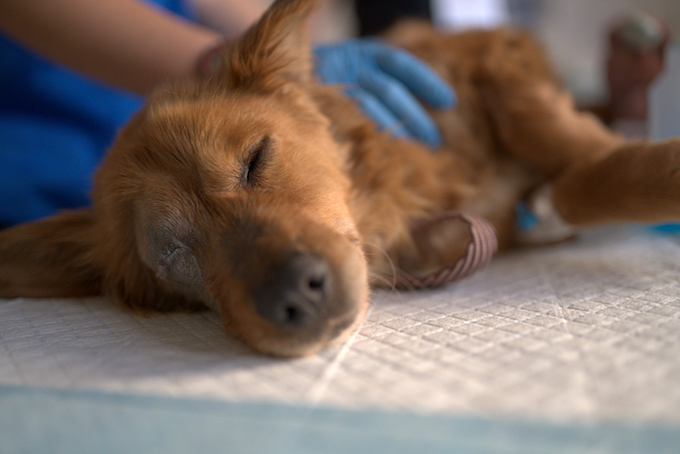Excess acidity in the blood in dogs is a condition caused by kidney problems. The condition is technically known as Renal Tubular Acidosis (RTA).
The condition happens when a dog’s blood pH level falls below seven.
Fortunately, the condition is relatively rare in dogs. Although it’s worth pointing out that the condition is different to metabolic acidosis. You can read about that condition here.
If you see the signs of excess acidity in the blood in your dog, then get to a veterinarian for a proper diagnosis and treatment.
Here’s what you should know about the symptoms, causes, and treatments for the condition.
Symptoms of Excess Acidity in the Blood in Dogs
The condition produces a range of symptoms. For example, some of the most common symptoms include:
- Panting
- Fever
- Dehydration
- Acting lethargic
- Losing weight
- Vomiting
- Nausea
- Diarrhea
- Blood in the pee
- Loss of appetite
- Peeing more than usual
- Drinking more water than usual
Causes of Excess Acidity in the Blood in Dogs

The cause of the condition is often idiopathic. This means that it is unknown.
However, kidney and ureter infections are often found to be causes. The liver disease feline hepatic lipidosis is another cause.
Treatments for Excess Acidity in the Blood in Dogs
Firstly, your vet will carry out a full physical examination of your dog. Secondly, blood and urine tests will be taken.
The subsequent results of these tests will rule out other underlying conditions.
Additionally, a blood gas analysis can be used.
Unfortunately, most dogs will need to be hospitalized to treat the condition. While in hospital, their acid and potassium levels will be normalized.
While recovering at home it is important to provide your dog with a quiet and calm environment. Also, keep up regular visits with your vet to monitor their recovery.
Have you ever cared for a dog who suffered from this condition? How did your vet help your dog recover? Let us know in the comments section below.









